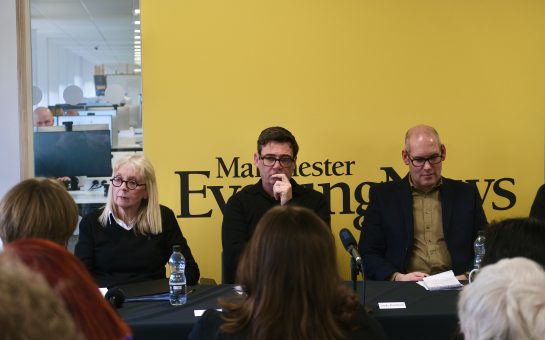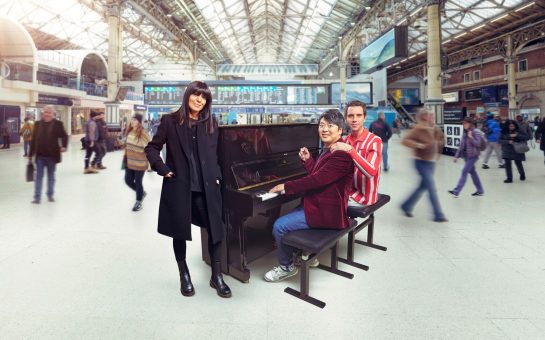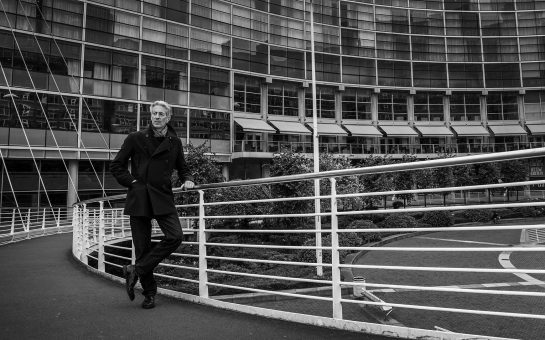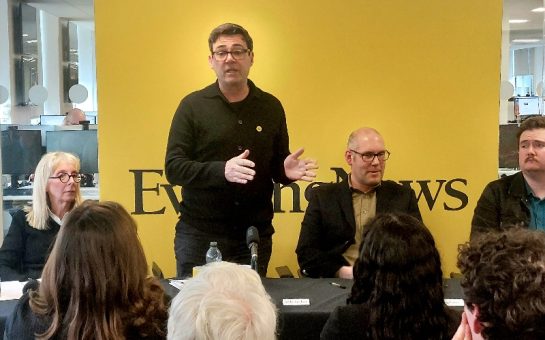People at bus-stops in Manchester often tend to be cold, wet, bored and thanks to The Inbetweeners inspired chant of ‘bus w*****s’, heckled by passing motorists.
They are forgotten as quickly as they are driven past and they are certainly not the archetypal glamorous subjects of portrait photographs.
Until now that is.
Accountancy kingpin turned photographer John Shinnick has delved into the journeys of those at the bus stops to create the exhibition Bus Stop Stories, which is on display at the John Rylands Library until June 22.
After approaching people at a Manchester City Centre bus stop, photographing them, engaging in conversation and hearing a variety of stories, John compiled a collection of 30 portrait photographs along with an accompanying story about each individual.
For the internet generation, talking to a stranger at a bus stop is generally avoided at all costs but John found that despite this literally unspoken rule of social practice, the strangers he engaged with were positively chatter-happy.
“What I found is that people just want to have the opportunity to talk but our normal social etiquette says you don’t talk to people,” John told MM.
“Your mum and dad tell you ‘don’t talk to strangers’.
“I talked to a lot of people and probably 50% would say ‘yeah fine’ and the other 50% I just had a great chat with.
“It evolved from ‘I’d like to take your portrait’ into what it became which is Bus Stop Stories.”
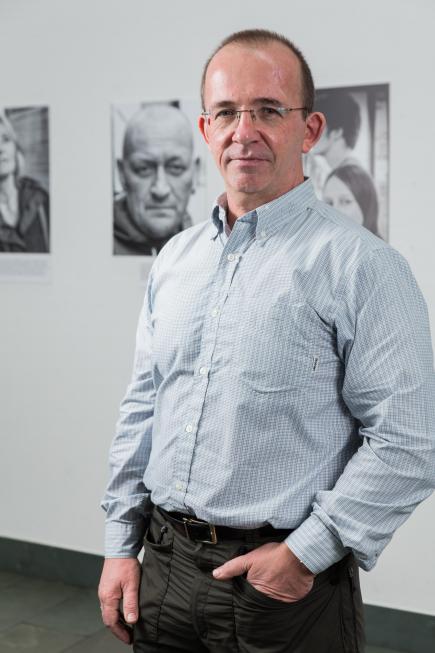
PIONEER: John Shinnick, creator of Bus Stop Stories
A loquacious character and former head of Grant Thornton- the fifth biggest accountancy firm in the world- John is fascinated by people and the stories they have to tell, hence his passion for portrait photography.
Finding subjects for portrait photography can often be problematic but John’s creation of this project enabled him to clear that particular hurdle.
“One of the issues you have in doing portrait work is actually finding people to sit,” he explained.
“So I thought the best way to get round that is to take it out on the street.
“I don’t favour non-consensual photography, when you take a photograph of somebody without them knowing, so I thought how can I engage with people and take the portraits?
“And a bus stop is great because it is dead time and you’ve not arrived anywhere and you’re at a bus stop for five minutes, ten minutes, 15 minutes and to an extent it is just lost time.
“So I thought if there are people there and they’ve got this lost time maybe I can get them to collaborate with me on it.”
Picking a quiet bus stop just off Piccadilly – it is very rarely inhabited by more than a handful of people-was key to the project as it enabled John to talk often one-on-one and strike up a rapport with his subjects.
Indeed he was so successful in doing so that he admitted he has a few new friends as a result of his work.
“Of the 30 people I spoke to I’m probably friends with six or seven of the subjects since I took their photograph,” said John.
“In particular there’s one guy who actually lives in Stevenson Square because he hasn’t got a home, but when it was his birthday I went round and gave him a card.
“He’s a bloke I have a good old chat with every now and then.
“There’s also a young couple who I spoke to and the day after the lad was starting an apprenticeship and I know it’s going well because I’ve kept in touch with them.”
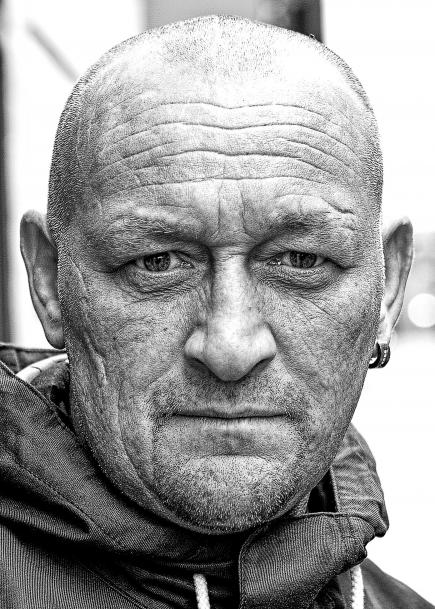
FRIENDS: John has remained in contact with some of his bus stop subjects
John’s ties with his story-tellers actually extended to four of them being invited to a private viewing of the exhibition prior to its opening which was also attended by sponsors.
By utilising his corporate contacts at Grant Thornton, Hill Dickinson lawyers and the Yorkshire Bank John –originally from St Helens now living in Manchester- raised sponsorship funds of £4,500 for the exhibition.
This not only covered costs but allowed John to donate around £200 to Redeye, a non-profit organisation that provide support for photographers at every level, helping them to find work, opportunities and to access events.
The 57-year-old often looks to help up and coming photographers where he can, but after reeling off the fact that 840 billion pictures were taken last year he admitted the industry can be tough.
“It’s always going to be what are you prepared to give to achieve,” he said.
“We are all photographers and to an extent that has decreased the value of the photographic art.
“Very few people can make a decent living out of it and I don’t know that many photographers who haven’t got something else going on in their lives.”
John certainly practices what he preaches as aside from being a photographer he has his own training business, is a neuro-linguistic programming (NLP) practitioner, a trained hypnotherapist and works with a global charity.
“Normally if I tell people what I do, I just tell them one thing because they think I’m a nutter,” he said.
“Well I’m a busy nutter!”
Part of an artistic family, his father was a part-time painter while his sister paints for a living in Ireland and Dubai.
John feels he, like his siblings, has now found his creative outlet in photography with his passion for portraiture all too apparent.
“I knew there was something artistic in there and I was always the one in the family with the camera,” he said.
“I’ve had a camera since 1963 I’ve just upgraded it over the years.
“My love of portrait photography is a kind of weird, weird altruism, I gave someone a portrait last week and I said ‘it’s not for you it’s for your great granddaughter so that she can see who you were at a moment in time in the early 2000’s’.
“So it’s that thing of letting people have something now that will be there for a long time afterwards.”
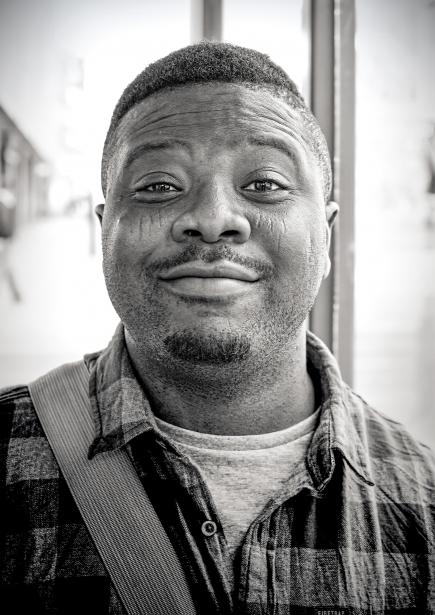
SAY CHEESE: One of 30 people photographed for the exhibition
Also a wedding photographer, John relishes the challenge of immortalising a happy couple’s big day on camera.
“I love weddings because there’s that instant, immediate fraught with danger and somebody’s going to give a critique of your work after you’ve done it,” he said.
“It’s that thing of capturing it and knowing that the bride and groom will show their grandchildren and somebody in 80 years time will go ‘granny is that really you?’”
Already plotting his next photographic venture John is toying with the idea of following a product all the way the back through its production process and mapping the journey on camera.
“Something like a tub of Haagen Daas ice cream would be interesting,” he mused.
“I’d start off at the retailer and the wholesaler and then follow the cardboard construction and ice cream construction.
“I’d end up with a vanilla pod in somewhere like Madagascar, I’ll end with a tree in Sweden which will be the cardboard and I’ll end up with a dairy farm in North Lancashire for the milk. That would be a great one.”
Where John’s next camera-led journey will take him is not yet clear but one thing is for sure: wherever he goes, this innovative photographer most definitely think outside of the box.
Bus Stop Stories is on display at the Atrium at the John Rylands Library until June 22 for more information visit www.library.manchester.ac.uk/rylands.
